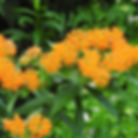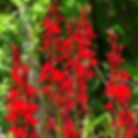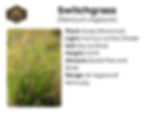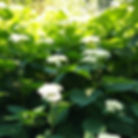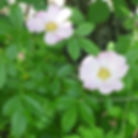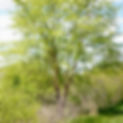21 Kentucky Native Plants for Landscaping
- Zac Gnadinger
- Aug 25, 2022
- 5 min read
Updated: Jul 11, 2023

With the recent interest in supporting our local pollinators and wildlife, more and more people are looking to plant native in their landscaping, gardens, and flowerbeds.
Below is an in-depth list of Kentucky native flowers, vines, ferns, grasses, shrubs, and trees that make great additions to landscaping projects.
When selecting a plant, paying attention to its preferred growing conditions and natural range in Kentucky is essential.
While many of these plants are highly adaptable, you will see the highest growing success by giving them what they need.
Good luck and happy planting!
Quick Scroll Selection:
Kentucky Native Plants for Landscaping
Many Kentucky native plants make excellent additions to landscaping, depending on local conditions and desired aesthetics.
For example, in a sunny, dry area, native wildflowers and grasses may be a good choice. On the other hand, in a moist, shady site, native ferns, woodland flowers, and shrubs are perfect. Native trees make great focal points and provide shade to landscape areas.
For even more Kentucky native plants, we highly recommend the book "Wildflowers and Ferns of Kentucky." It's an invaluable source of information. (#Promotion)

1. Butterfly Milkweed
Butterfly Milkweed (Asclepias tuberosa) is one of the many native milkweeds found in Kentucky. It's a popular choice for butterfly gardens because of its long-lasting, bright orange flowers that attract pollinators. Additionally, it serves as a larval host plant for monarch butterflies, whose populations are rapidly declining.
2. Purple Coneflower
Purple Coneflower (Echinacea purpurea) is a favorite for those new to native plants. It boasts beautiful pink-purple blooms and is a favorite nectar source for hummingbirds, bees, and butterflies. In addition, its seed heads attract finches and other birds in the late summer.
3. Black-Eyed Susan
Black-Eyed Susan (Rudbeckia hirta) is an iconic prairie flower that adds color to the summer landscape. The flowers have a prolonged bloom time and attract a variety of pollinators. Later in the season, finches and other birds eat from the seed heads.
4. Cardinal Flower
Cardinal Flower (Lobelia cardinalis) is one of the many red flowers of Kentucky. It's a late summer bloomer, producing brilliant flower spikes for a month or longer. Cardinal Flower is desirable to hummingbirds and is considered one of the best hummingbird-attracting plants in Kentucky.
5. Wild Bergamot
Wild Bergamot (Monarda fistulosa), or Bee Balm, is a well-known and highly adaptable plant for your landscape. Its fragrant lavender flowers add color to the garden and attract bees, butterflies, and hummingbirds, making it an excellent choice for pollinator gardens.
6. Virginia Bluebells
Virginia Bluebells (Mertensia virginica) is a perfect addition to a partial or full-shade woodland landscape. Their flowers start as a pink bud and open into a beautiful blue bloom. Over time, Virginia bluebells can spread into a dazzling colony under the tree canopy. However, as a spring ephemeral, they will die back after the spring season and go dormant until next year.
7. Maypop
Maypop (Passiflora incarnata), or Passion Vine, is a fast-growing native vine known for its large, showy, fragrant flowers. It also produces edible fruit that's both sweet and sour in flavor. The vine freezes to the ground at the first frost in late fall and returns in late spring.
8. Coral Honeysuckle
Coral Honeysuckle (Lonicera sempervirens), or Trumpet Honeysuckle, is a deciduous climbing vine known for its vibrant, trumpet-shaped flowers. The blooms are typically a shade of red or orange. They are highly fragrant, attracting hummingbirds and other pollinators to the garden. It would make an excellent addition grown next to an arched arbor.
9. Cinnamon Fern
Cinnamon Fern (Osmundastrum cinnamomeum) is an excellent choice for landscaping due to its stunning beauty. It's known for its cinnamon-brown colored spore-bearing structures surrounded by lush green fronds. In addition, as a perennial plant, it reliably regrows every year without replanting, making it a low-maintenance addition to shade gardens.
10. Christmas Fern
Christmas Fern (Polystichum acrostichoides) is an evergreen fern commonly found in wooded areas. It is known for its distinctive leathery, dark green leaves that remain lush and green throughout the winter, making it a popular choice for holiday decorating and winter landscaping.
11. Switchgrass
Switchgrass (Panicum virgatum) is a vital prairie grass and a beautiful landscaping plant. A patch of Switchgrass creates valuable habitat, providing food, shelter, and nesting material for birds and other wildlife. Its deep roots also help in soil stabilization.
12. Indiangrass
One of the earliest warm-season grasses to seed, Indiangrass (Sorghastrum nutans) brings a natural drama to the autumn landscape. It attracts birds and butterflies to the garden with its feathery plumes and golden-bronze seed heads.
13. Pennsylvania Sedge
Pennsylvania Sedge (Carex pensylvanica) is a versatile native plant that adds texture and visual interest to Kentucky landscapes. Its dense, low-growing foliage and ability to thrive in various soil types make it an excellent choice for ground cover.
14. Fox Sedge
Fox Sedge (Carex vulpinoidea) is a native sedge that excels in wetland and riparian environments. Its arching stems and distinctive seed heads provide a natural and graceful aesthetic, making it an attractive option for water features or rain gardens.
15. Wild Hydrangea
Wild Hydrangea (Hydrangea arborescens) is a popular shrub sought out for its clusters of white flowers that bloom in the summer. Because this plant flowers on the current season's growth, most gardeners cut the stems to the ground in the early spring, allowing new shoots to emerge from the base and bloom that summer.
Unfortunately, cultivation has given this species more showy but sterile flowers versus its naturally smaller, fertile ones. If you want to benefit pollinators the most, buy plants grown from seeds collected from wild populations.
16. Carolina Rose
Carolina Rose (Rosa carolina), also known as Pasture Rose, is a medium shrub with delightfully fragrant pink flowers that bloom in the late spring. Later in the summer, its blooms mature into vitamin-rich, red hips, an excellent food source for birds.
17. New Jersey Tea
New Jersey Tea (Ceanothus americanus) is a small, well-behaved bush with desirable glossy leaves. It makes it a perfect addition to any landscape when not in bloom. However, when it does bloom in the summer, it pops with clusters of scented white flowers, attracting numerous pollinators.
18. Eastern Redbud
With a dramatic display of purplish-pink blossoms covering its bare branches, the Eastern Redbud (Cercis canadensis) announces the arrival of spring every year. New leaves unfurl underneath the flowers, growing into perfect heart shapes for summer shade. This small, ornamental tree is a great focal point for the landscape. It's particularly valuable to early-season pollinators searching for nectar.
19. Flowering Dogwood
Flowering Dogwood (Cornus florida) is widely considered one of Kentucky's most beautiful small trees, as it offers multiple seasons of interest. With delicate white blooms in the spring, crimson foliage in the fall, and September berries attracting winter songbirds, it's no wonder it's so charming. However, it's typically an understory tree in the wild, so it does best planted in partial to full shade.
20. River Birch
River Birch (Betula nigra) is a highly sought-after tree for landscaping due to its fast growth rate. In addition, its smooth and light tan bark peels back to reveal striking salmon-pink and cinnamon-brown hues beneath, adding visual interest to any outdoor space.
They are commonly available in single-stem and multiple-trunk clumps. Still, from my experience, the single stems hold up significantly better to storms and freezing rain events.
21. Red Maple
Red Maple (Acer rubrum) truly lives up to its name, with vibrant red hues present throughout the year. From its red flowers in the spring, reddish leaf stems in the summer, brilliantly colored leaves in the fall, and vibrant buds in the winter, it adds a splash of color to the landscape in every season. Additionally, it's an excellent choice for providing shade in your yard.
Where to Buy Native Plants
Unfortunately, the big box stores don't typically carry native plants.
If there are any plants you like from this list, the next step is to find where to get them. Head over to our article on where to buy Kentucky native plants.
Each section is listed by county, so you can quickly skip to a supplier near you. If there's no seller in your area, we also include a section of online retailers offering shipping.

